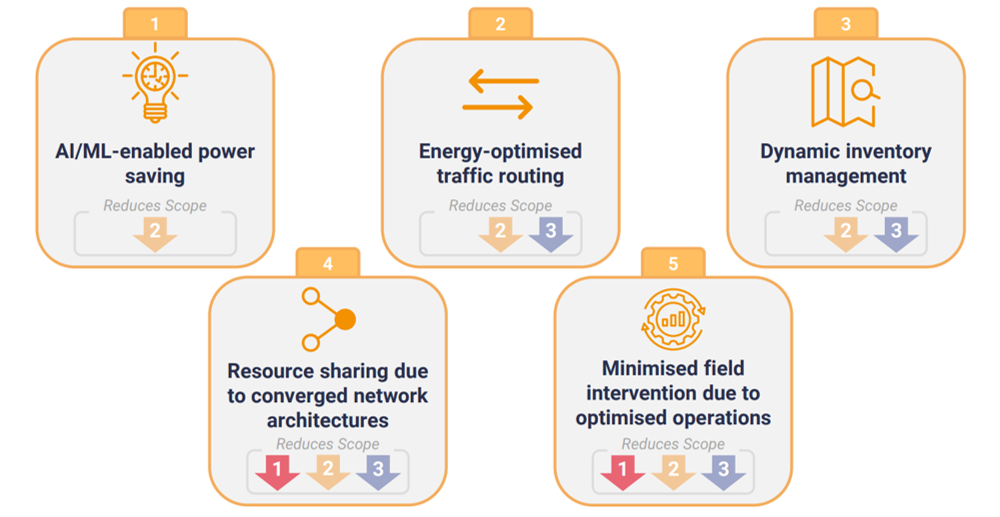Climate change and increasing energy costs are sharpening Communications Service Providers' (CSPs) focus on sustainability as they set greenhouse gas reduction goals. These initiatives have become especially urgent across Europe, where energy costs have risen rapidly. According to the GSMA in their Mobile Next Zero report, energy consumption constitutes between 20-40% of network OPEX with 80% of that energy being consumed in the radio access network (RAN).
The role of software automation in driving telecom sustainability is gaining increased attention for its ability to help drive down energy consumption and carbon emissions. CSPs are taking action in this area by modernizing their infrastructure with more sustainable network equipment, and by taking advantage of advanced software capabilities to automate and optimize their operations.
For example, software-defined networking (SDN) leverages open APIs to give operators better visibility and control of their network. The utilization of cloud-native functions and services such as 5G reduce the need for multiple physical network devices. These innovations, combined with the deployment of cloud-native and automation-optimized operations support systems (OSS) enable CSPs to significantly improve productivity of their workforce and reduce energy consumption.
The increasing shift to fiber broadband networks and services also supports more energy-efficient data transmission, lower maintenance requirements, and reduces work-from-home transportation requirements. By streamlining and automating the planning, deployment, and operations of fiber broadband networks and services, operators create additional power savings and lower carbon emissions by reducing the number of systems and truck rolls required.
A recent report published by STL Partners (2024) found that CSPs seeking to advance their sustainability strategies through network automation are focusing on five use cases, including optimizing traffic routing, dynamic inventory management, convergence, and AI-centric network and services monitoring. Together, these use cases help them address sustainability at every stage of the network and service lifecycle. The report also concluded that while some CSPs have fully incorporated sustainability into their automation journey, others are missing opportunities for synergistic emission reductions.

Source: STL Partners, Accelerating Sustainability Through Network Automation 2024
By simplifying the modernization and automation of network and service operations, Blue Planet enables CSPs to reduce their power consumption and emissions and help address rapidly rising energy costs. As the transformation to 5G and other dynamic services continues, so will the contribution of cloud-native automation to meeting operators' sustainability objectives.
